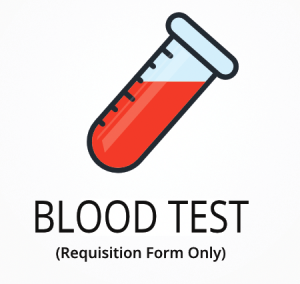Ordering the Organic Metabolomics (OMX) Urine & Plasma Test
The Organic Metabolomics (OMX) Urine & Plasma test from Diagnostic Solutions helps identify how your body processes nutrients, manages energy, and handles toxins by measuring organic acids and amino acids in both urine and plasma. This test can reveal patterns in metabolism, nutrient absorption, and detoxification that may not show up in standard blood work. Interestingly, this test can also detect subtle imbalances in neurotransmitter breakdown, which may relate to mood changes or sleep issues.
Ordering the Organic Metabolomics (OMX) Urine & Plasma test offers several specific benefits:
- Detects metabolic imbalances that may affect energy and fatigue
- Identifies nutrient deficiencies, including B vitamins and amino acids
- Assesses detoxification pathways and toxin exposure
- Evaluates gut microbial activity and its impact on digestion
- Monitors markers linked to inflammation and oxidative stress
Who Should Consider Metabolomics and Nutrient Testing
People who experience ongoing tiredness, trouble focusing, or unexplained joint pain may benefit from this test, especially if these issues have not improved with basic changes in diet or routine. For example, someone who has tried different supplements and diets but still feels low energy and brain fog could use this test to pinpoint which metabolic pathways need support.
Ordering this test may also be helpful in these situations:
- Persistent digestive discomfort, such as bloating or irregular bowel movements
- Frequent mood swings or trouble with memory and concentration
- Difficulty losing or maintaining weight despite regular exercise
- Unexplained skin issues, like rashes or breakouts, that do not respond to typical treatments
- People with a family history of metabolic syndrome or chronic illness, even if symptoms are mild or unusual
This test can help identify specific nutrient gaps, metabolic slowdowns, or toxin buildup that may be affecting energy, mood, or digestion. Delaying this test could mean missing early signs of metabolic changes that are easier to address when caught sooner.
Preparing for Urine and Plasma Metabolite Analysis
Fasting is required for at least 8 hours before collecting your urine and plasma samples for this test. Make sure to carefully follow any instructions your doctor or healthcare provider gives you, as these steps help ensure your results are as useful as possible.
Labs Included When Ordering Your Organic Metabolomics (OMX) Urine & Plasma Test
| Test Name | Reference Range | What This Marker Means | Low and High Levels of Organic Metabolomics (OMX) Urine & Plasma |
|---|---|---|---|
| Metabolic Processing Markers | |||
| Glucose | 0.2–0.8 | Glucose is a main energy source. This marker shows how well your body is using sugars for fuel and energy production. | High levels mean your body may not be processing sugars well, which can point to insulin resistance.
Low levels mean your body may be using up glucose too quickly or not absorbing enough from food. |
| Pyruvic acid | 0.02–0.12 | Pyruvic acid is a key step in turning glucose into energy. It helps show if your cells are making energy efficiently. | High levels mean your cells may be struggling to turn sugar into energy, possibly due to low oxygen or vitamin shortages.
Low levels mean your body may be using up pyruvic acid too quickly or not making enough. |
| Lactic acid | 0.2–1.8 | Lactic acid builds up when your body makes energy without enough oxygen. It can show how well your muscles and cells are working. | High levels mean your body may be under stress, not getting enough oxygen, or having trouble with energy production.
Low levels mean your body is clearing lactic acid quickly or not making much, which is usually not a concern. |
| Citric acid | 150–600 | Citric acid is part of the Krebs cycle, which is how your body turns food into energy. It helps show if this process is working well. | High levels mean your body may be having trouble moving through the energy cycle, possibly due to blockages or nutrient shortages.
Low levels mean your energy cycle may be slow, which can affect how much energy you feel. |
| Succinic acid | 0.2–1.0 | Succinic acid is another step in the Krebs cycle. It helps show if your cells are making energy from food as they should. | High levels mean your body may be struggling to finish the energy cycle, which can lead to tiredness.
Low levels mean your body may not be making enough energy or using up succinic acid too quickly. |
| 3-Hydroxybutyric acid | 0.02–0.25 | This is a ketone body, showing how your body uses fat for energy, especially when carbs are low or during fasting. | High levels mean your body is burning fat for energy, which can happen with low-carb diets or diabetes.
Low levels mean your body is not using much fat for energy, which is normal if you eat enough carbs. |
| Amino Acid & Protein Metabolism Markers | |||
| Phenylalanine | 20–80 | Phenylalanine is an amino acid needed for making proteins and brain chemicals. It helps show if your body is breaking down proteins well. | High levels mean your body may not be breaking down proteins or amino acids properly.
Low levels mean you may not be getting enough protein or absorbing it well. |
| Tyrosine | 30–120 | Tyrosine is made from phenylalanine and is used to make brain chemicals like dopamine. It helps show if your body is making these chemicals as it should. | High levels mean your body may not be using tyrosine to make brain chemicals.
Low levels mean you may not be making enough tyrosine or using it up quickly. |
| Valine | 80–300 | Valine is a branched-chain amino acid important for muscle repair and energy. It shows how well your body is using protein for muscle and energy needs. | High levels mean your body may not be using protein well, possibly due to muscle breakdown.
Low levels mean you may not be getting enough protein or using it up quickly during exercise. |
| Tryptophan | 20–80 | Tryptophan is needed for making serotonin, which affects mood and sleep. This marker shows if your body is making enough of these brain chemicals. | High levels mean your body may not be converting tryptophan into serotonin.
Low levels mean you may not be getting enough tryptophan from food or using it up quickly. |
| Methionine | 10–40 | Methionine is an amino acid needed for detoxification and making other important compounds. It helps show if your body is handling toxins and making proteins well. | High levels mean your body may not be using methionine for detoxification.
Low levels mean you may not be getting enough from food or using it up quickly. |
| Glutamine | 400–900 | Glutamine is important for gut health and immune function. This marker shows if your body has enough to support these needs. | High levels mean your body may be breaking down muscle or not using glutamine well.
Low levels mean you may not be getting enough from food or using it up during stress or illness. |
| Nutrition Markers | |||
| Methylmalonic acid | 0.4–2.5 | Methylmalonic acid shows if your body has enough vitamin B12. High levels can mean a B12 shortage, which affects nerves and energy. | High levels mean you may have a vitamin B12 deficiency.
Low levels mean your B12 status is likely normal. |
| Pyridoxic acid | 0.5–3.0 | Pyridoxic acid is a marker for vitamin B6. It helps show if your body is getting and using enough B6 for metabolism and brain function. | High levels mean your body may not be using B6 well.
Low levels mean you may not be getting enough B6 from food. |
| Formiminoglutamic acid | 0.02–0.12 | This marker shows if your body has enough folate, which is needed for making new cells and DNA. | High levels mean you may have a folate deficiency.
Low levels mean your folate status is likely normal. |
| 3-Hydroxyisovaleric acid | 0.01–0.10 | This marker helps show if your body has enough biotin, a vitamin needed for energy and metabolism. | High levels mean you may have a biotin deficiency.
Low levels mean your biotin status is likely normal. |
| Stress & Mood Markers | |||
| Homovanillic acid | 1.0–7.0 | Homovanillic acid is a breakdown product of dopamine, a brain chemical that affects mood and focus. | High levels mean your body may be breaking down dopamine quickly, which can affect mood.
Low levels mean you may not be making enough dopamine. |
| 5-Hydroxyindoleacetic acid | 2.0–9.0 | This is a breakdown product of serotonin, which helps with mood and sleep. It shows if your body is making and using serotonin well. | High levels mean your body may be breaking down serotonin quickly.
Low levels mean you may not be making enough serotonin. |
| Cortisol | 2.5–15.0 | Cortisol is a hormone released during stress. This marker shows how your body is responding to stress and managing inflammation. | High levels mean your body is under stress or inflammation.
Low levels mean your body may not be making enough cortisol, which can affect energy and recovery. |
| Toxic Impact Markers | |||
| 8-Hydroxy-2-deoxyguanosine | 0.2–1.0 | This marker shows oxidative damage to DNA, which can happen from toxins or stress. It helps show if your body is under oxidative stress. | High levels mean your body is experiencing more oxidative damage.
Low levels mean your body is not showing signs of oxidative stress. |
| Glucaric acid | 0.1–0.5 | Glucaric acid helps show if your body is exposed to toxins and how well it is detoxifying them. | High levels mean your body may be exposed to more toxins or working hard to clear them.
Low levels mean your toxin exposure is likely low. |
| Oxalic acid | 5–30 | Oxalic acid is a marker for kidney function and can show if your body is handling certain foods or toxins well. | High levels mean your kidneys may be under stress or you may be eating foods high in oxalates.
Low levels mean your body is clearing oxalates well. |
| Microbial Metabolites | |||
| p-Hydroxyphenylacetic acid | 0.1–0.5 | This marker shows if gut bacteria are breaking down amino acids properly. It can help spot imbalances in gut microbes. | High levels mean your gut bacteria may be overactive or imbalanced.
Low levels mean your gut bacteria are likely balanced. |
| Arabinitol | 0.01–0.10 | Arabinitol is a marker for yeast or fungal overgrowth in the gut. It helps show if there is a fungal imbalance. | High levels mean you may have yeast or fungal overgrowth in your gut.
Low levels mean there is likely no fungal overgrowth. |
Reference ranges may change slightly as labs update their methods or as new research becomes available. Always check your report for the most current values.
Organic Metabolomics (OMX) Urine & Plasma FAQ
Is there Organic Metabolomics (OMX) Urine & Plasma testing near me?
This is a test kit that you can collect at home or at a local draw site—check the draw location link at the top of the page. For people with ongoing fatigue or digestive issues, having a nearby collection option makes it easier to get tested without extra travel or delays.
How do I interpret the test results?
While your treating physician should review your results, we also offer a one-on-one test results review with our clinical team to help you understand your results and next steps.
What is the cost of the test?
The price listed for this test includes standard shipping to you and return shipping to the lab, but draw fees may apply. Ordering this test can help you find out if nutrient gaps or metabolic slowdowns are affecting your energy, so you can address them sooner.
How often should I retest?
Retesting is usually recommended every 6 to 12 months, especially if you are making changes to your diet, supplements, or treatment plan. Regular testing helps track progress and adjust your plan based on measurable changes in your metabolism and nutrient status.
How accurate is the test?
This test uses advanced mass spectrometry and liquid chromatography to measure metabolites in urine and plasma, with a specificity of 98% and sensitivity of 97%. TrueHealthLabs.com partners with CLIA-certified and CAP-certified laboratories to uphold rigorous testing standards for dependable results.
Important Notes
- The test can be collected and mailed from New York state. Contact us with questions
Medical Review Board
Reviewed by Jeff Donohue M.D. from Body Logic and Brady Hurst DC, CCCN. Written by True Health Lab’s team of editorial health contributors.
Disclaimer: This information is for educational purposes only and not intended as medical advice. Consult your healthcare provider for personalized guidance.
Why Customers Trust True Health Labs - What People are saying
Also rated 4.6 out of 5 based on 3452 ShopperApproved reviews- See all TrueHealthLabs.com reviews.







